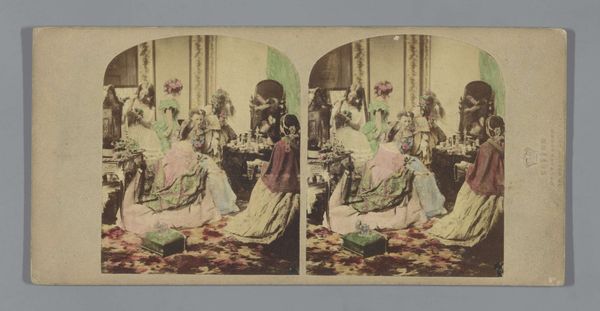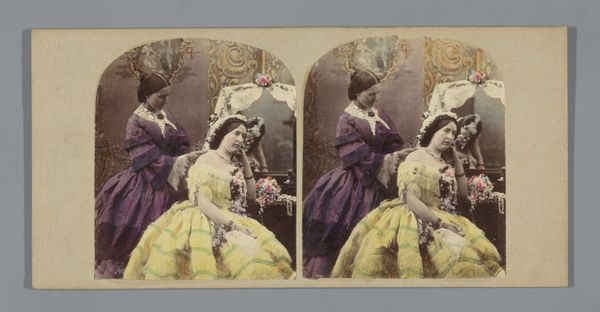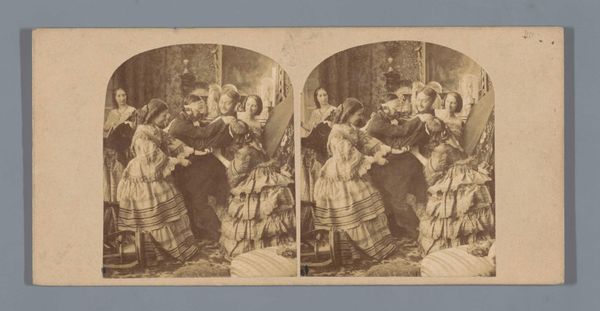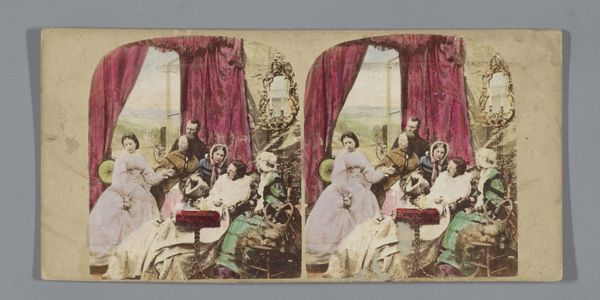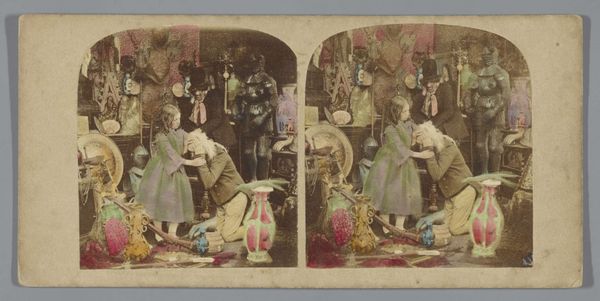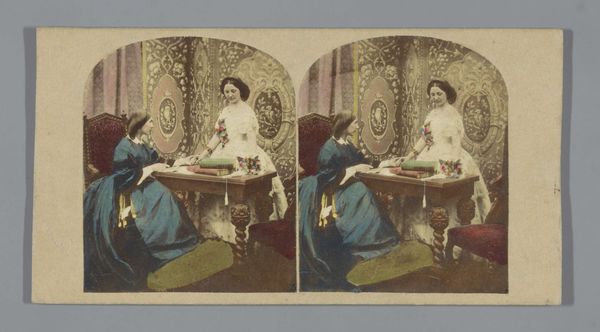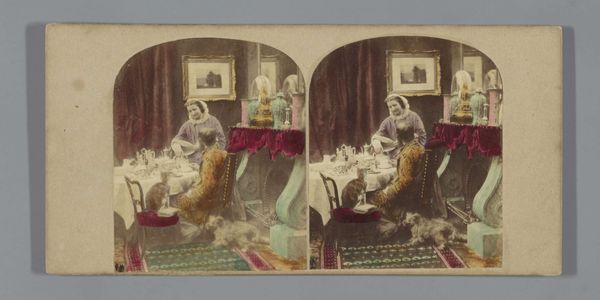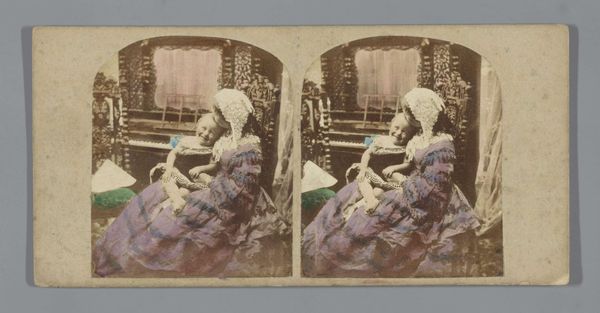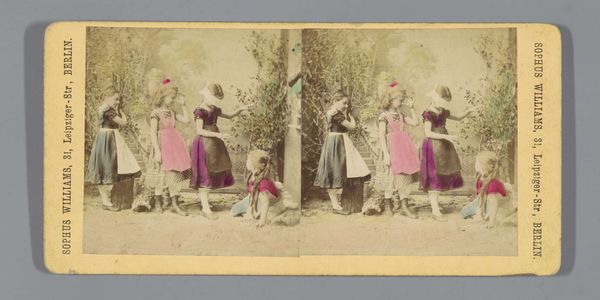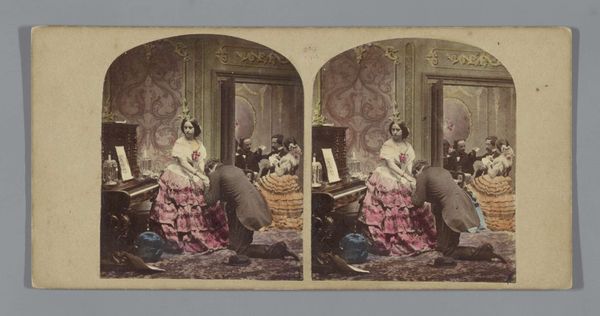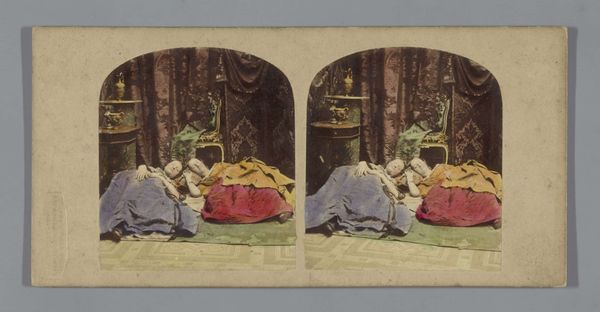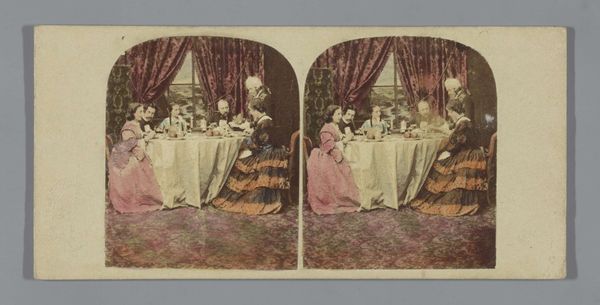
photography
#
portrait
#
photography
#
genre-painting
Dimensions: height 84 mm, width 175 mm
Copyright: Rijks Museum: Open Domain
Editor: This is a stereoscopic photograph called "Man gives music lesson to three women" by Alfred Silvester, probably taken sometime between 1850 and 1864. It really strikes me as capturing a specific moment in time, almost like a little tableau vivant. What stands out to you about this piece? Curator: Well, beyond its immediate charm, it prompts some interesting questions about the social role of photography at the time, and its intersection with class and gender. Do we see here a genuine music lesson, or a carefully constructed scene of bourgeois domesticity for the camera? Editor: That's interesting, I hadn’t thought of it that way. What makes you question its authenticity? Curator: The staged nature of stereoscopic photography at that time. Its mass production catered to a rising middle class eager to consume images that reflected and reinforced their values: refined leisure, domestic harmony, and female accomplishment, hence why it reminds me a little of genre painting. Is the music lesson intended to display an elite lifestyle, even if the family might be struggling financially? And to what degree is this a ‘real’ representation, versus a performance of social expectations? The subjects strike stiff, posed. Editor: So you're suggesting the image participates in constructing and perpetuating a certain ideal of family life. Is that also linked to its popularity? Curator: Precisely. Photography in the mid-19th century, particularly stereoscopic views like this, became a powerful tool in shaping cultural narratives, defining "appropriate" behavior, and solidifying social hierarchies. Can we determine if stereoscopic photography such as this one had a cultural impact beyond documenting it? Editor: That's given me a whole new way to think about photography of the period. It's not just a snapshot, but a curated display. Curator: Exactly. It's a window, but one with a deliberately designed frame and with constructed elements inside of the captured frame. It also gives us an interesting peek into what photography once meant in culture.
Comments
No comments
Be the first to comment and join the conversation on the ultimate creative platform.
